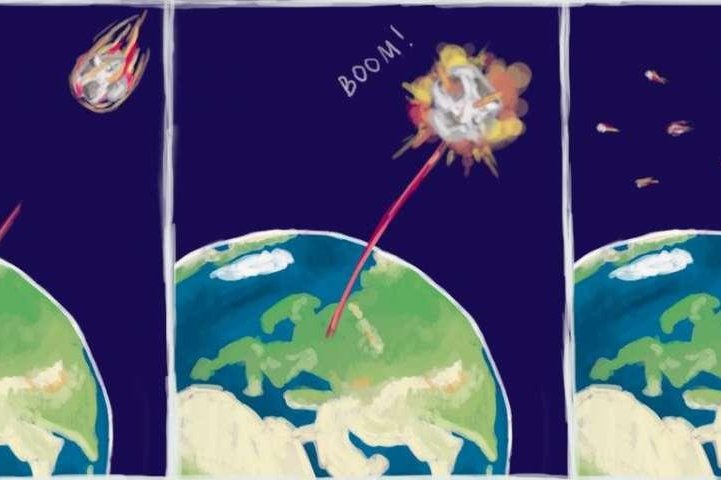Scientists used lasers and tiny asteroid models to see how big of bomb would be needed to destroy an Earth-threatening asteroid. Photo by Elena Khavina/MIPT
March 14 (UPI) -- To simulate a nuclear explosion on an asteroid careening towards Earth, a team of scientists in Russia built miniature asteroid models and blasted them with lasers.
The results of their experiments -- published in the Journal of Experimental and Theoretical Physics -- could help scientists better understand the type of explosive force needed to knock an Earth-bound asteroid off its collision course.
Asteroids buzz by Earth all the time, and most of them are relatively small. But some asteroids can stretch a few hundred miles across. If such an asteroid were to strike Earth, the collision could be powerful enough to trigger another mass extinction event.
Astronomers aren't aware of any large space rocks currently on a path toward Earth, but scientists are discovering new asteroids all the time.
Should Earth find its way in the path of large asteroid, there are two options: blow up the asteroid or deflect its orbit.
The latest experiments considered the possibility of the first option.
A fragment of the meteor that exploded over Chelyabinsk Oblast, Russia, in 2013, served as the model for the miniature asteroids. The manufacturing process was designed to replicate the natural asteroid formation process, which involves sedimentation, compression and heating. Each stage of the formation process was tweaked to ensure the model's composition, density, porosity and rigidity were as close as possible to the real thing.
Scientists used laser pulses to mimic the shockwaves produced by a nuclear bomb explosion. While blasting the model space rocks with the laser, researchers measured the distribution and movement of heat and pressure across the tiny asteroids.
Their experiments produced results similar to those predicted by computer simulations. But researchers found the total destruction of the model asteroids required nearly twice as much force per unit of mass as the force needed to disintegrate the Chelyabinsk meteor.
The experiments also proved a succession of small explosive forces was no more efficient than a single large explosion for the destruction of the mini asteroids.
The data suggests an Earth-threatening nonmetallic asteroid measuring 600 feet across would require a 3-megaton bomb.
In followup tests, scientists plan on measuring the effects of explosive forces on asteroids with different shapes and compositions.
"By accumulating coefficients and dependencies for asteroids of different types, we enable rapid modeling of the explosion so that the destruction criteria can be calculated promptly," Vladimir Yufa, a researcher at the Moscow Institute of Physics and Technology, said in a news release. "At the moment, there are no asteroid threats, so our team has the time to perfect this technique for use later in preventing a planetary disaster."
NASA is currently managing several missions designed to study asteroids, including OSIRIS-REx, launched last year, and its Near-Earth Asteroid Scout, a CubeSat set to launch in 2019















